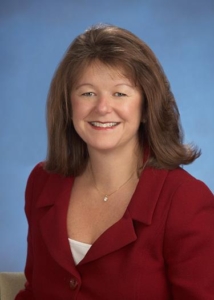 By Laura Steele
By Laura Steele
Lisa James used to dread tax season. As a CPA for a large accounting firm in the early 1990s, she put in 60 hour work weeks between January and May, and then settled back into a 45-50 hour per week routine with very little downtime, except for a three week vacation. “It was challenging, and sometimes even grueling, but my company had no concept of flex time,” says James, who kept this schedule for 5 years until she married and had children. “I managed pretty well by putting my first child in infant care, but when the second baby arrived, I found I could not keep up with either my company’s or the client’s expectations. Since I am a perfectionist, I felt I had no options but to quit for awhile.”
In the past twenty years, however, the nation’s top accounting firms have made steady progress instituting new flex time and work/life policies. The largest driver turned out to be the Sarbanes-Oxley Act of 2002, which set new standards for corporate accountability and dramatically increased the need for skilled accounting and financial reporting employees at the big four accounting firms, including Deloitte, Ernst & Young, KPMG, and PricewaterhouseCoopers. The Bureau of Labor Statistics projected a 22 percent growth rate between 2008 and 2018, for accountant and auditors, adding 279,400 more positions to the 1.29 million already-existing jobs. Despite the recession, the Bureau of Labor Statistics expects the number of accountants to grow faster than the national average. One way the big four began competing for a limited talent pool, was to offer their employees a more flexible schedule.
A recent article in the New York Times highlights this trend. The article, “Flex Time Flourishes in Accounting Industry,” reports that “when it comes to respecting the work-life balance of employees, the accounting industry far outshines the rest of corporate America.” Though not everyone agrees that the big four are models of flexibility, it is clear that the situation has improved and the big four accounting firms are now offering a much wider array of flex time options, including sabbaticals with partial salary, shortened work weeks, and personal time off to take care of family matters.
Ellen Galinsky, president of the Families and Work Institute, notes that “The nation’s accounting firms excel at this for a boring, accounting reason – they’ve looked at the numbers, and they see it helps.” Some firms estimate that increased flex time options have helped them cut turnover from 24% annually to just 15%, a dramatic decrease that can save a company millions in hiring and retraining costs. “This is really about retaining our top talent,” says Michael Fenlon, People Strategies Leader at PricewaterhouseCoopers.
James couldn’t agree more and is now back working for one of the big four in Denver. But last fall, she faced a new work/life challenge. “My father passed away years ago, and my mom had been living independently in Wisconsin for the past decade. Last year, she came down with severe pneumonia, and was hospitalized for two weeks. She was so weak afterwards that she had to be placed in a rehabilitation hospital. It was clear to me that she could no longer live alone, and I needed to take a month off to help her recover and then move her to an assisted living facility in Boulder, Colorado, where I live. Fortunately, my company was very supportive, and I was able to take 6 weeks off, with little advance notice, to help my mom.”
According to the Journal of Accounting, James’ story is far from unusual. “Successful (work/life balance) programs address elder-care as wells as child-care. The growing demand for attending to parents is one of today’s most significant trends.” In fact, the National Council on Aging estimated that between 30 percent and 40 percent of all employees will assist their elderly parents in 2020, compared with 12 percent today.
Professional accounting organizations are also trying to provide their members with better information to help guide them through their work/life balance issues. For example, the Missouri Society of Certified Public Accountants (MSCPA) has a Work/Life Balance Committee. The MSCPA website offers a list of resources, articles and contacts with the goal of “influencing the accounting profession to affect the necessary changes to develop and retain a more competitive work force and to permit men and women to achieve balance among personal, family and professional responsibilities.”
James says, “The accounting industry has come a long way during the course of my career. I intend to keep working for at least another 5-10 years, provided that my employer can respond appropriately when my family needs me the most. I leave work by 3pm most Fridays so I can have an early dinner with my mother, and relax with her as the weekend begins. I’m more confident than ever that flex time is here to stay.”
 By Melissa J. Anderson (New York City)
By Melissa J. Anderson (New York City)

 By Melissa J. Anderson (New York City)
By Melissa J. Anderson (New York City) Contributed by Susan E. Bos, CMA, CPA
Contributed by Susan E. Bos, CMA, CPA
 By Melissa J. Anderson (New York City)
By Melissa J. Anderson (New York City) By Melissa J. Anderson (New York City)
By Melissa J. Anderson (New York City) By Laura Steele
By Laura Steele By Stephanie Wilcox (Middlefield, CT)
By Stephanie Wilcox (Middlefield, CT) Contributed by CEO Coach Henna Inam
Contributed by CEO Coach Henna Inam